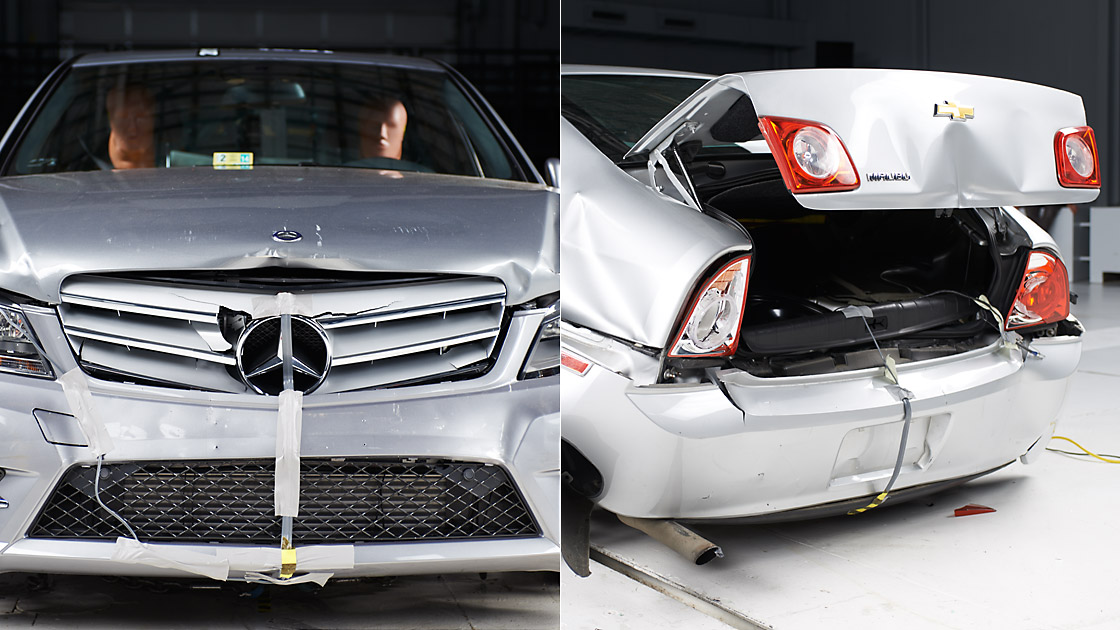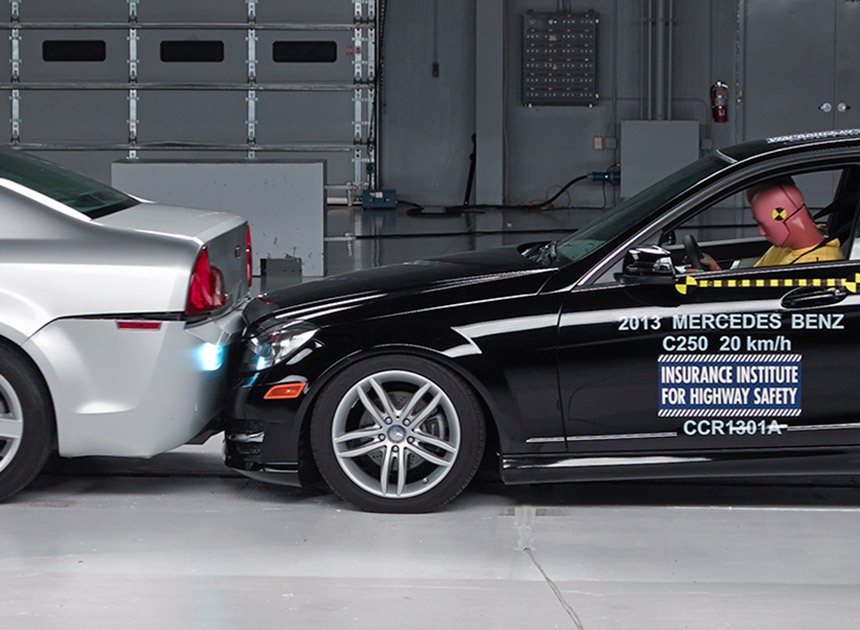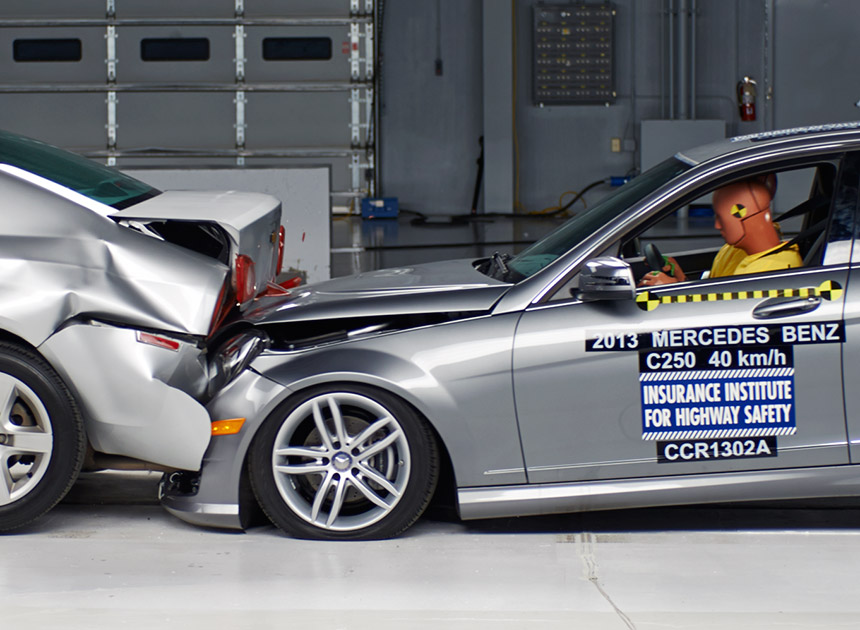Crash tests show how autobrake can mitigate crash severity, damage costs
September 27, 2013

The idea of an autobrake system is to prevent a front-to-rear impact or reduce speeds to mitigate the crash. To show why reducing speed is important, IIHS conducted two demonstration crash tests at different speeds. In each test, a 2013 Mercedes-Benz C-Class ran into the back of a stationary 2012 Chevrolet Malibu. The tests illustrate what happens in a 25 mph crash when the striking vehicle doesn't have autobrake, compared with what happens when autobrake reduces the speed by 13 mph. This is how much the C-Class's autobrake system reduced the car's speed in IIHS track testing.
Total damage in the higher speed crash test was about $28,000. The Malibu was a complete loss. Lowering the speed to 12 mph trimmed the damage to $5,700. Since these were relatively low-speed tests, it's no surprise that dummies in both vehicles indicated low injury risk and airbags didn't deploy. A similar speed reduction in a higher speed crash would significantly reduce injury risk, as well as vehicle damage.

Mercedes-Benz C-Class into rear of Chevrolet Malibu, 12 mph test

Mercedes-Benz C-Class into rear of Chevrolet Malibu, 25 mph test
Damage estimates: Mercedes C-Class into Chevrolet Malibu
| Speed | Mercedes C-Class | Chevrolet Malibu | Total |
|---|---|---|---|
| 12 mph | $3,438 | $2,277 | $5,715 |
| 25 mph | $9,457 | $18,674 | $28,131 |